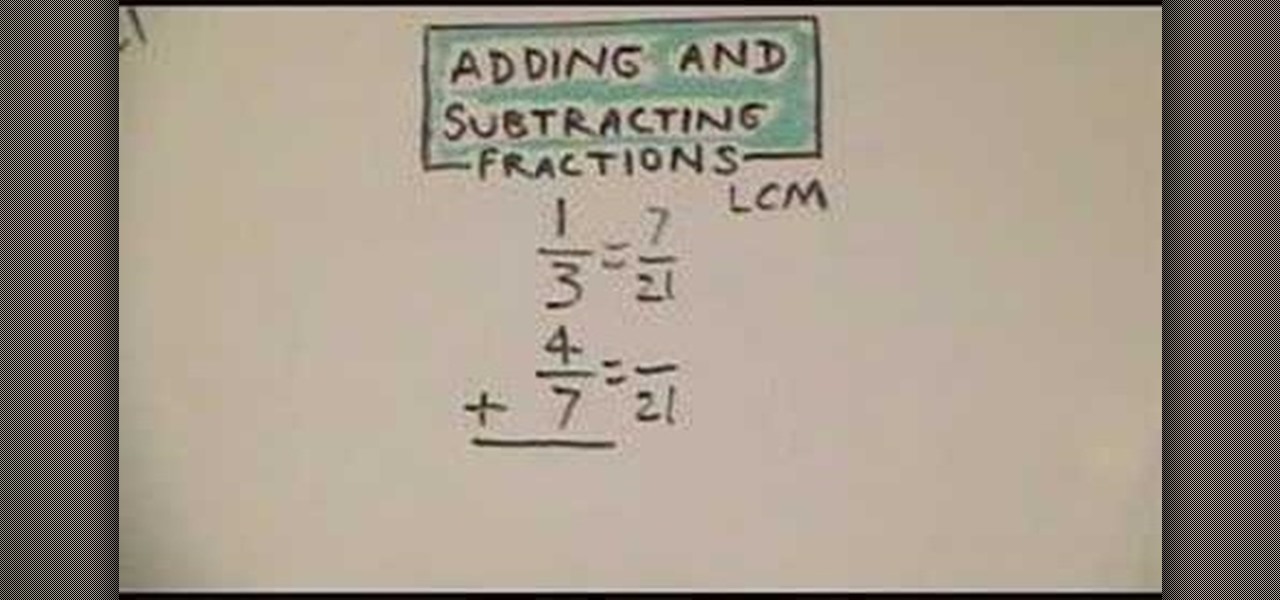
How To: Add & subtract fractions
This is a video that teaches how to add and subtract fractions. For fractions that have like denominators, you simply add the numerator and keep the denominator. Next, you reduce the fraction to its lowest term.


This is a video that teaches how to add and subtract fractions. For fractions that have like denominators, you simply add the numerator and keep the denominator. Next, you reduce the fraction to its lowest term.
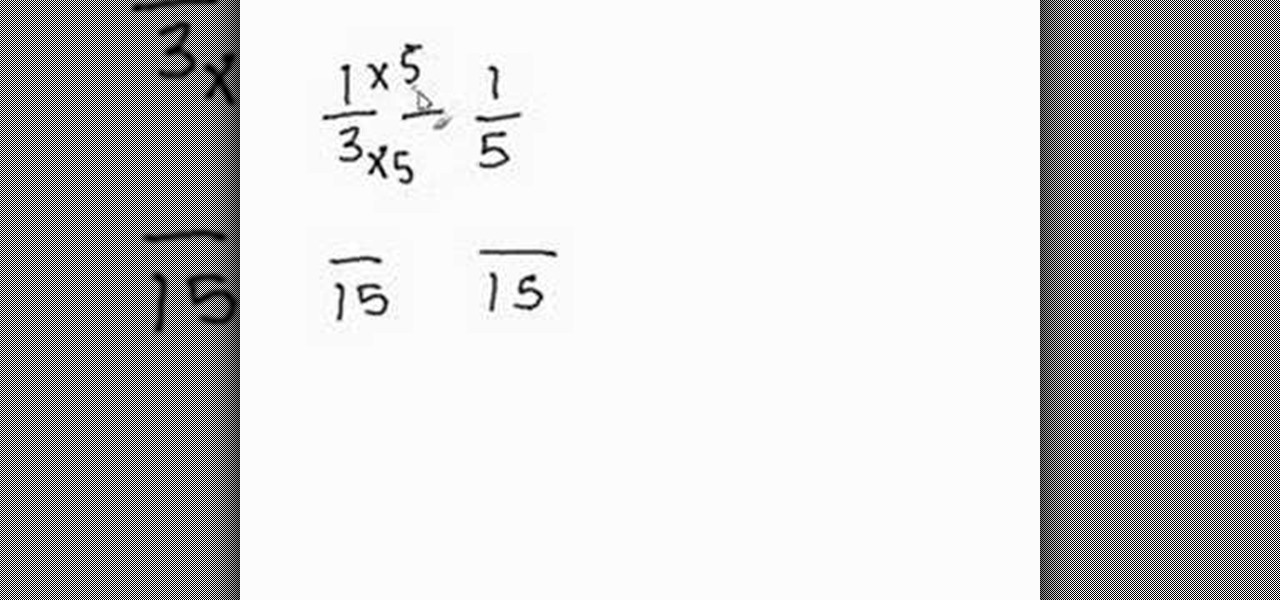
In this tutorial the author shows an easy and simple way of subtracting fractions with uncommon denominators. He says that to subtract fraction with uncommon denominator, we need to make their denominators equivalent first and after making the denominators equal, you need to increase the numerators proportionally to maintain the original ratio of the fraction. Now as the denominators are same, we can directly subtract the numerators arriving at a new fraction. He further shows how to deduce t...
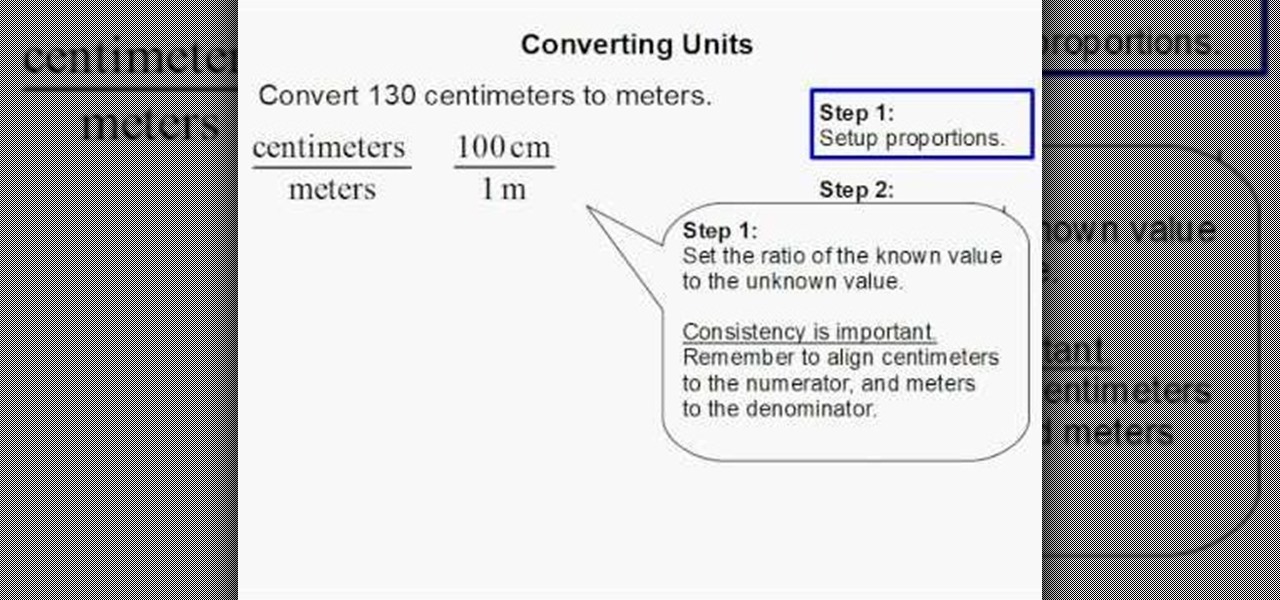
In this tutorial the instructor shows how to convert lengths between different units. He show a two step approach where in the first step he setups a relation between centimeters and meters showing that 100 cm equals 1 meter. Now he writes it down in a fraction form and equates it to another similar centimeter upon meter fraction where the value in meters in unknown. Now he cross multiplies and solves the fractions giving the result of the unknown meters. This video clearly explains how to co...

A simple video showing how to subtract fractions with common denominators. The denominators is the bottom number of a fraction and the numerator is the top number. So in the fraction of one half 1 is the numerator and 2 is the denominator. If you have fractions with same denominator you can subtract the numerators to find the difference. After the subtracting the numerators add the common denominator to complete the fraction. So five sevenths subtracted by one seventh equals four sevenths. If...

You can solve any proportion using the fundamental rule of proportions. First you must build the proportion if you are given a word problem. Decide using logic whether it is a direct proportion (more on one side means more on the other). If so, find the parts of the equation that use the same units and make a fraction with these, putting the smaller number on top. The number left over is linked with one of the other two numbers in the fraction--use logic to figure out which. Put it in the sam...
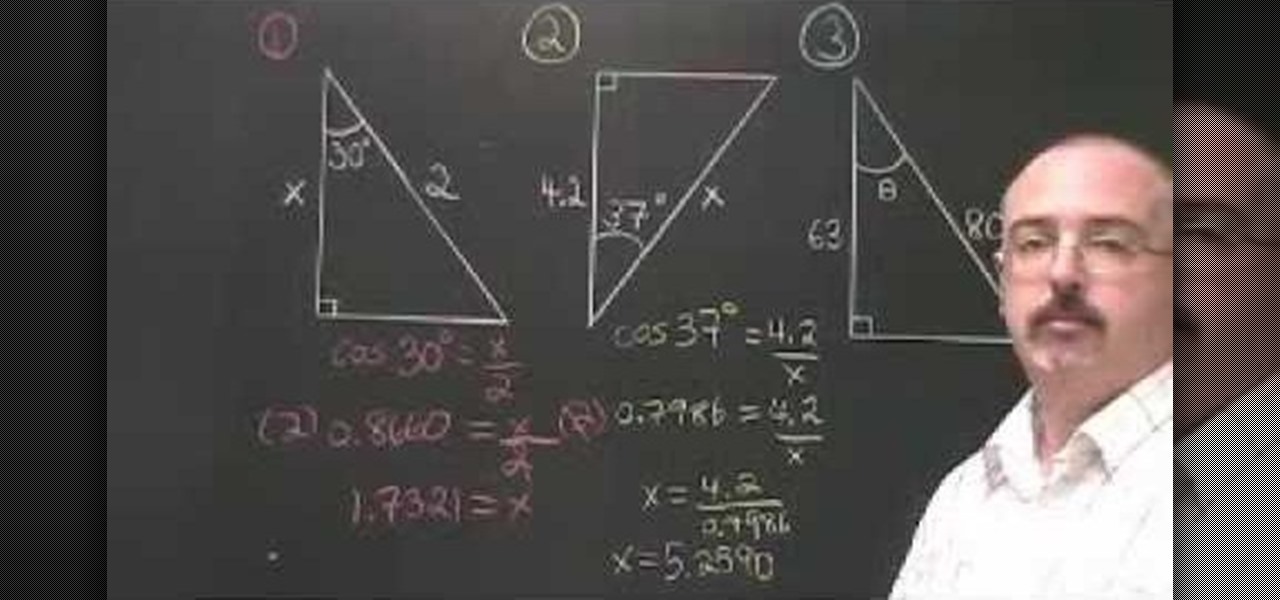
In order to find the cosine of a triangle in trigonometry, you will need to understand the CAH formula, part of the larger mnemonic of SOHCAHTOA, which outlines how to find the sine, cosine, and the tangent of an angle. The video offers accurate diagrams as well as examples in order for their viewers to better understand the CAH formula. The CAH formula simply outlines the fact that the cosine is equal to the length of the adjacent side of the triangle over the hypotenuse of the triangle. By ...

In this video the tutor shows how to add and subtract monomials. He says that to add or subtract monomials they have to be similar terms. Similar terms are those that have same variables and equal exponents to the variables. He shows how to do this using illustrative diagrams and solves a couple of sample problems. He adds a few monomials with similar terms and also explains how to subtract a few monomials. This video gives an introduction to similar terms and how to add and subtract monomials.

Pamela Holmes starts off an asparagus stir fry by cutting up four cloves of garlic. She chops up some onion as well. She teaches us that you take the wooden end of the asparagus, and instead of cutting of the ends, you take the end and snap it. Wherever it snaps off, that is where it is supposed to be cut off. She then chops the asparagus into equal sections. She puts the onions into the pan first, then the peppers, and finally, the asparagus. She finishes it up with some seasoning. This vide...
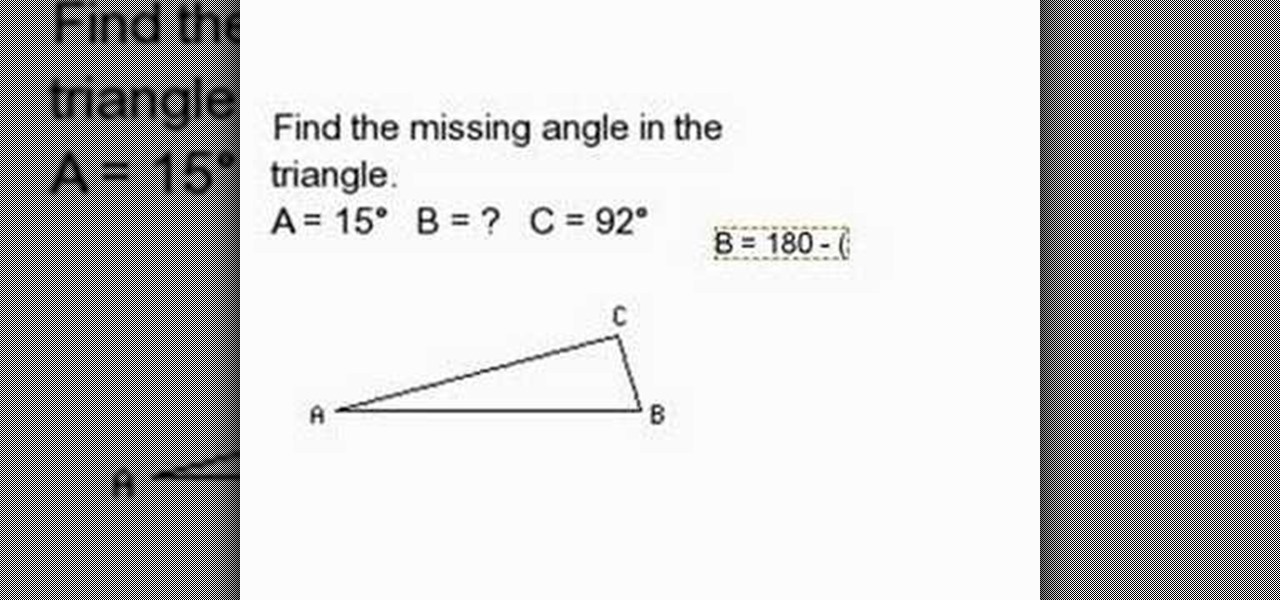
Are math problems getting you down? Well this should be of some help. Here is how to find a missing angle inside of a triangle. Now the first thing to remember when solving this type of question is that the sum of all the three angles inside a triangle is equal to 180 degrees. Therefore, whenever we have two of the three angles inside the triangle, all we have to do in order to obtain the missing angle is to add up the two known angles and subtract the total from 180 and we will get the missi...
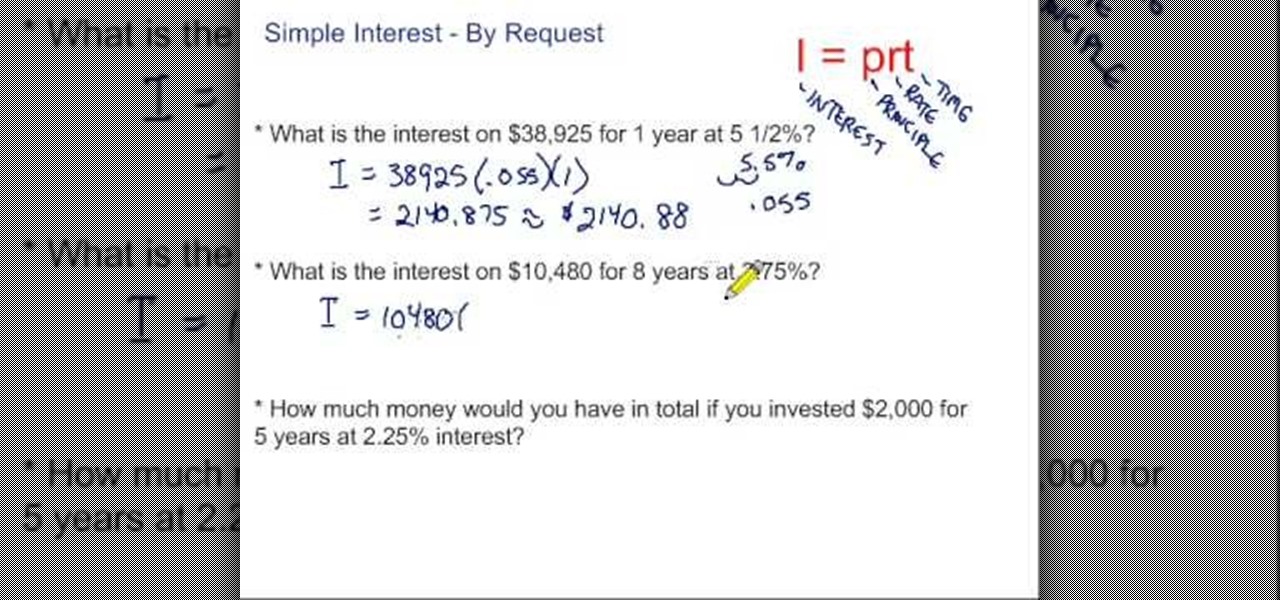
Learn how to calculate simple interest with step-by-step instructions using the formula I=prt. Simply defined, interest equals principle times rate times time. The video shows various examples of calculating this formula by plugging different variables into the equation. Although, these calculations can seem hard to follow, the way they are presented is straightforward and simple to understand. The video also explains converting percentages to decimals, which is the cornerstone of applying th...

This is an illustrative video on how to rationalize a denominator. Let us take an example of 1 over root 2. If we have to rationalize this denominator, we need to multiply it and divide it by root 2. You will get root 2 over 2. Similarly if you want to rationalize 4 root 6 over root 2, we have to multiply and divide it by root 2. We will get 4 root 12 over 2. That is equal to 2 root 12. In this way you can find rationalize the denominator easily.
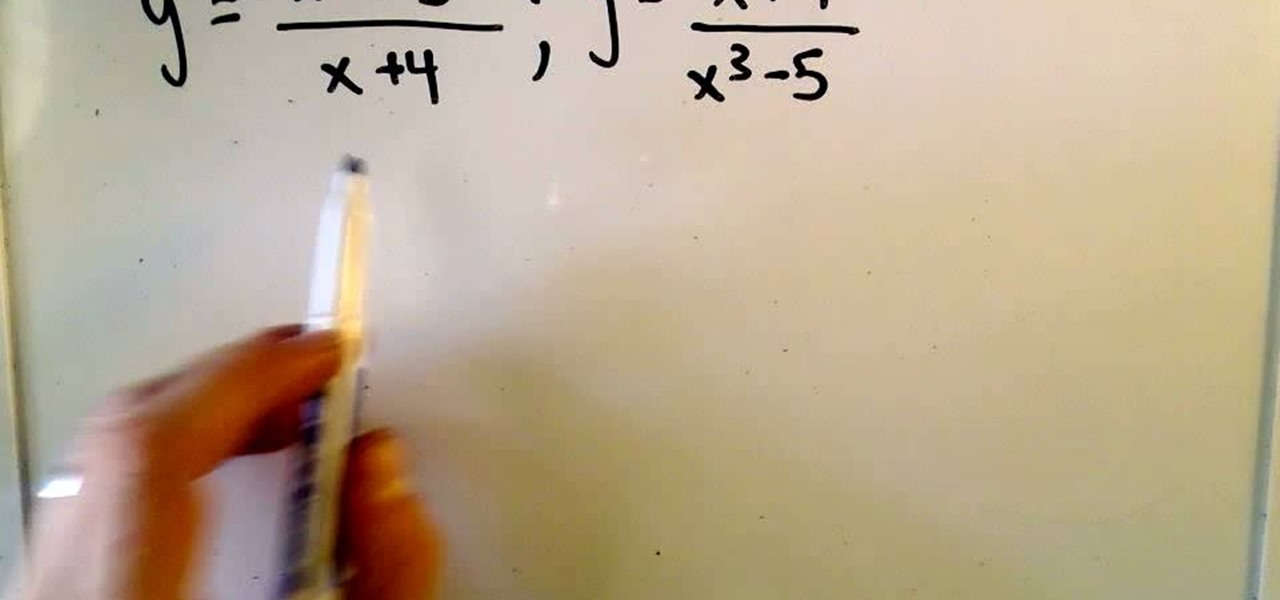
Finding horizontal asymptotes is very easy! Not all rational functions have horizontal asymptotes. the function must satisfy one of two conditions dependent upon the degree (highest exponent) of the numerator and denominator. If the degree of the numerator is equal to the degree of the denominator, then the horizontal asymptote is y= the ratio of the leading coefficients. If the degree of the denominator is greater than the degree of the numerator then y= 0. If the degree of the denominator i...
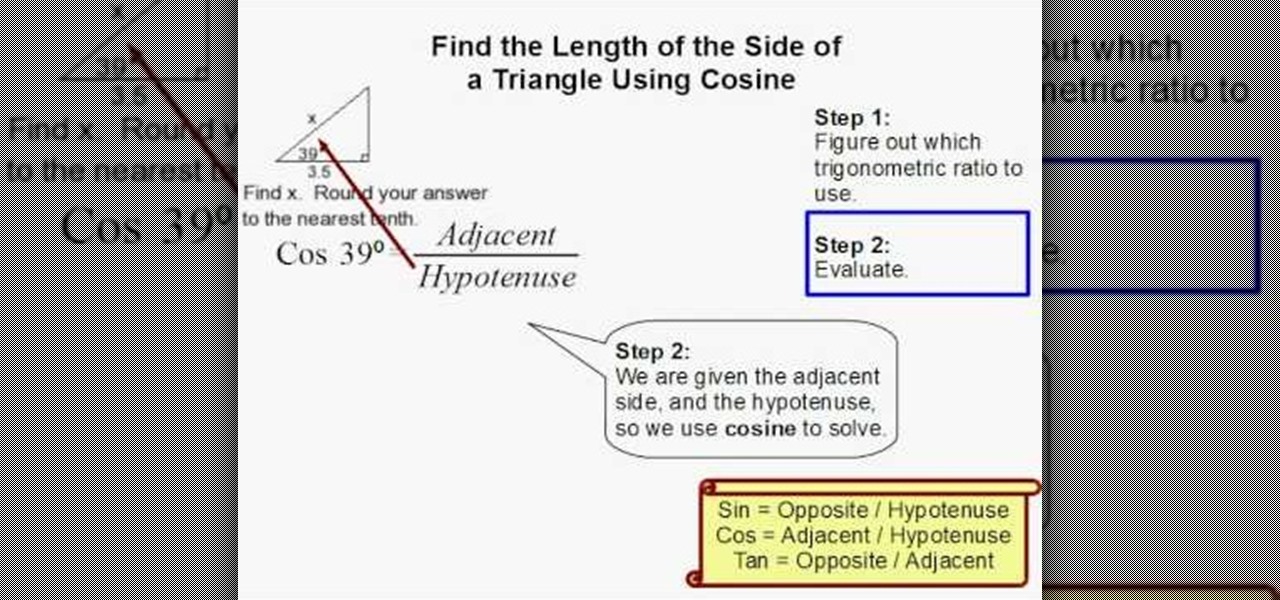
To find the length of a side of a triangle using cosine, you first need to find the angle and which sides are given. After you determine the angle and given sides, you'll need to figure out which trigonometric ratio to use. If you are given the adjacent side and the hypotenuse, you need to use cosine to solve. The degree equals adjacent divided by hypotenuse. In the example, Cos 39=3.5/x. After simplifying the equation, we found x to be 4.49. If the directions ask you to round, be sure to rou...
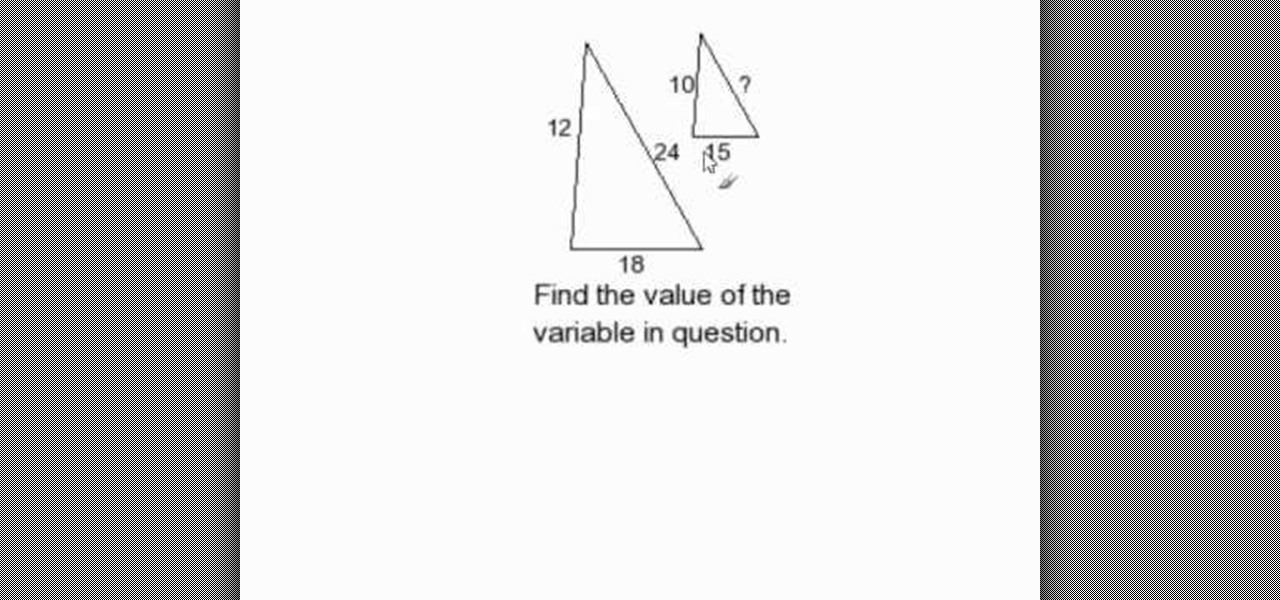
In this tutorial the author shows how to find out the missing side of a triangle which is similar to an other triangle. He explains the concept of similar triangle using diagrams and by showing that similar triangles have equal corresponding angles and parallel sides. Now he labels sides of similar triangles and intends to find out the length of unknown side. Now in similar triangles, as the lengths of sides are proportionate he shows how to write a equation of proportion and solve it finding...
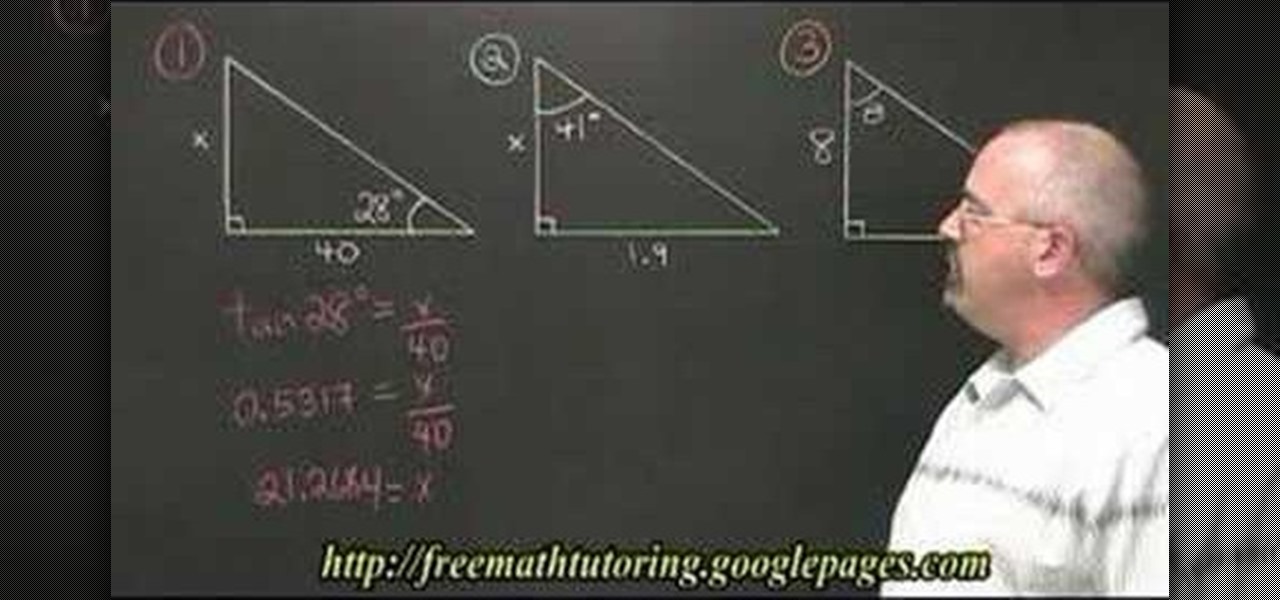
The video is a tutorial in trigonometry. The teacher teaches that the tangent or the tan of an angle is the ratio of the opposite side to the adjacent side of a right angled triangle. If one side and one angle is given then the value of the unknown side can be found by solving the equation tan of angle is equal to opposite upon adjacent side. If the angle is to be found then the tan inverse of the value is seen in the calculator.

A representative from Math Problem Generator explains in this video that converting a simple fraction from its current state to a higher equivalent can be very simple. He explains the process neatly and provides a great example. To convert a fraction, you must multiply the numerator and the denominator by the exact same number. The example he shows is captured from the screen of a computer and is written out in some sort of a painting program. The example shows that four-ninths equals eight-e...

This video is about how to make a cool snowflake using a paper. For this you have to take six equal square of any paper. Cut 4 silts on both the sides. Do not join cuts. Take 1 piece of paper and place tap .Flip over one repeat on all . This will be one side of snowflake. Repeat on all the pieces of paper. Staple together ends. Join all 6 in the middle .The 3d cool snowflake is ready to use it.
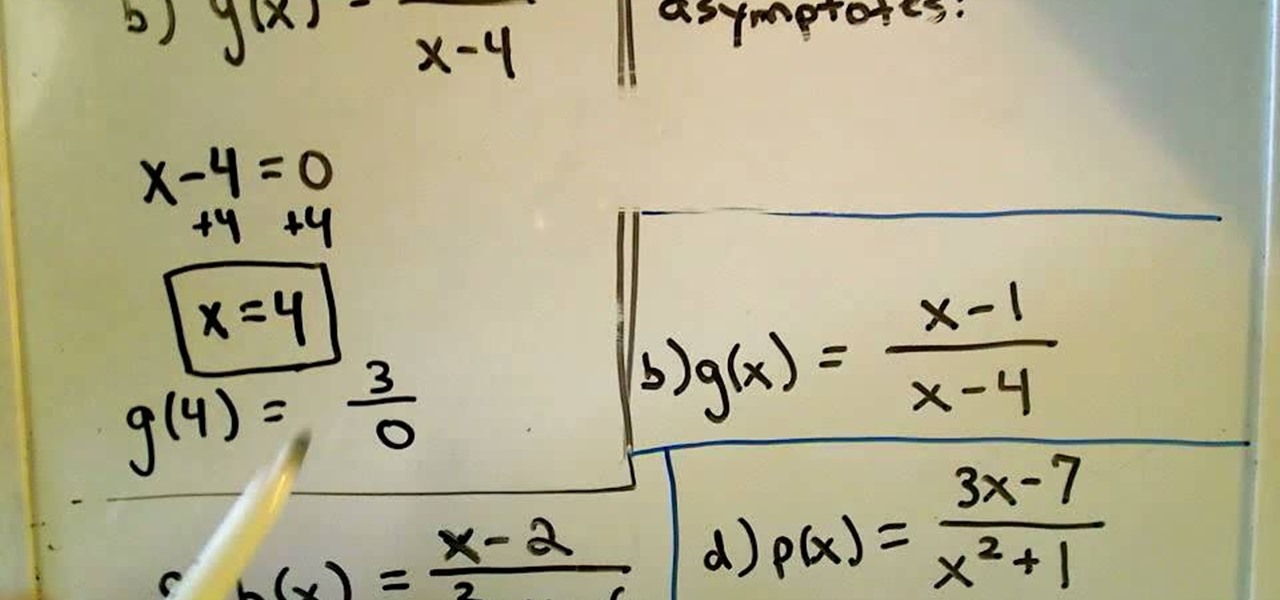
To find a vertical asymptote, you are trying to find values of x that produce 0 in the denominator but not in the numerator. If 0/0 occurs, that means you have a "hole" in the graph. A vertical asymptote is a place in the graph of infinite discontinuity, where the graph spikes off to positive or negative infinity. To find the vertical asymptote, set the denominator equal to zero and solve for x. Check that the values also do not give a zero in the nominator. If the values work, you have found...

This video tells you how to find a slope of a parallel / perpendicular to it. In the equation y = mx + c, m is the slope. To calculate the slope of a line that is parallel to another line, you have to consider the rule m1 = m2 which means slope of the first line m1 is equal to the second line m2, if both the lines are parallel. Take the equation y = 2/3x - 7.2/3 is the slope. According to the rule m1 = 2/3 and so m2 = 2/3.Now to calculate the slope of perpendicular line you have another rule ...
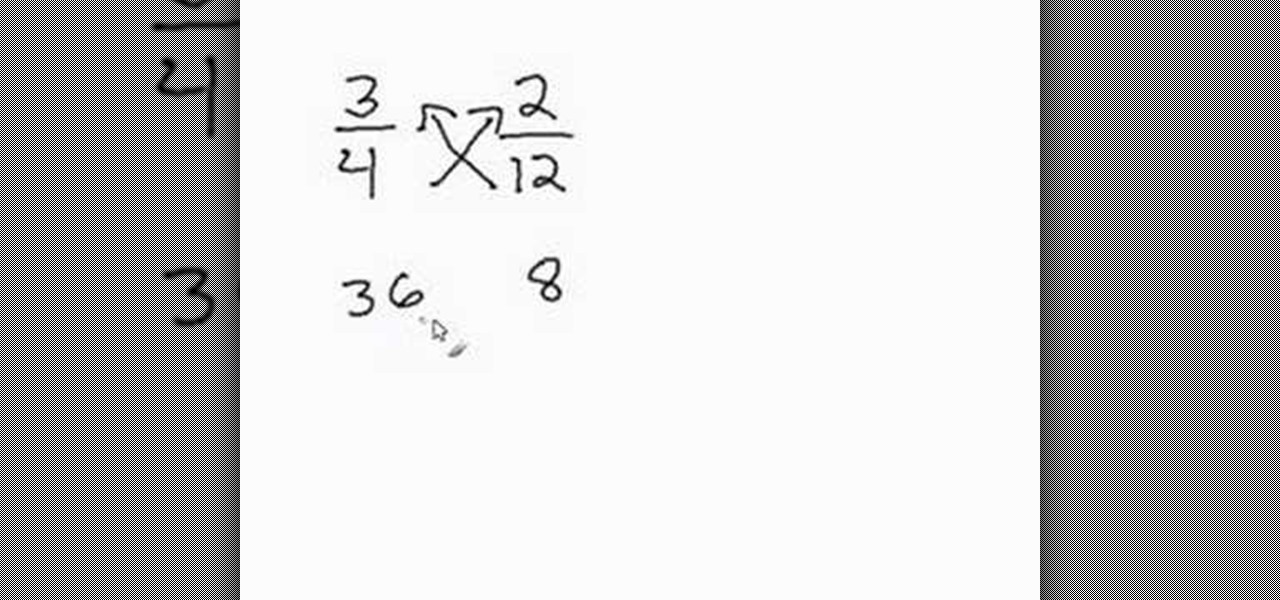
A short video teaching you how to compare fractions. Starting with two fraction like three fourths and two over twelve. You cross multiply the denominator or the bottom number of three fourths which is 4 with the numerator or the top number of the second fraction which is 2. So the 8 that you come up with goes under the two twelfths. Now you do the same for the two fraction this time multiplying the denominator 12 with the numerator 3 coming up with 36. So now you have 36 under three fourths ...
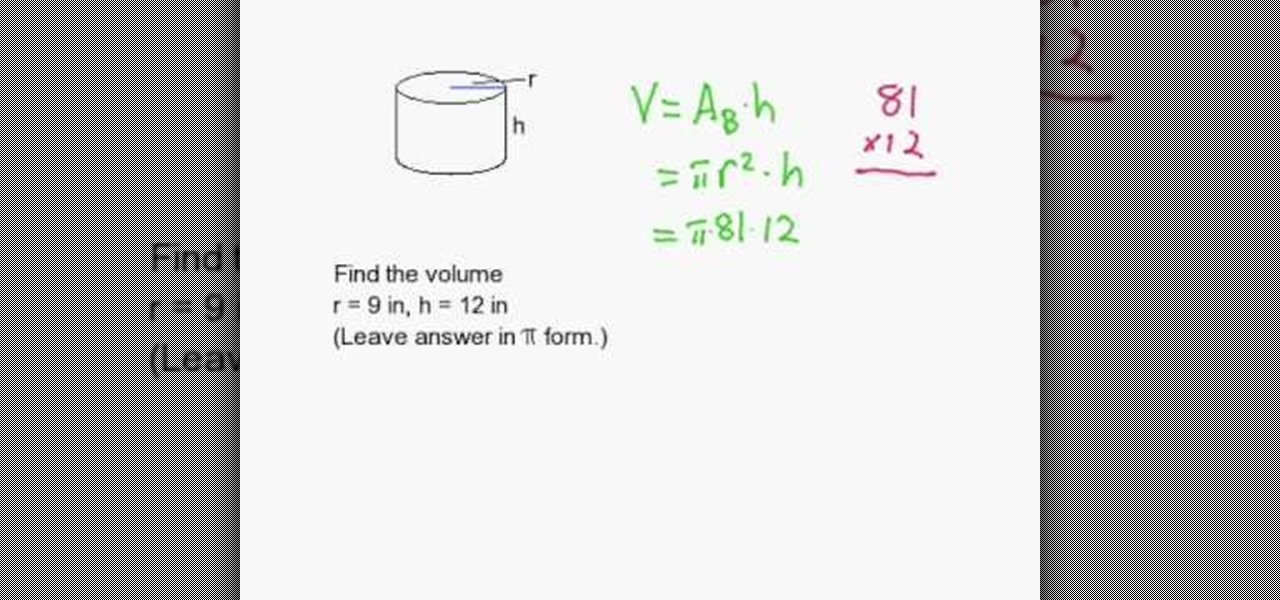
This is an excellent educational video on mathematics. This video teaches you how to find the volume of cylinder with an example. The volume of cylinder is the bottom area multiplied by the height. Here, the height is 12 inches and the radius is 9 inches. The bottom area is Pi r square=piix81 sq inches. volume = piix81x12 = piix972

In this tutorial the author explains the concept of Newton's Second Law of motion which states that force is equal to mass times acceleration. So the equation to compute force F is F = m * a, where m is the mass of the body and a is the acceleration produced by the force on that body. He explains that even our weight is our mass times the gravity. So now he explains that mass of a body is constant and only our weight changes depending up on the situation we are in. If you want a clear underst...

In this video the instructor shows how to shade a system of inequalities. He says that shading a system of inequalities is similar to shading a single inequality but in the former case you tend to shade more than one inequality in the same graph. He shows how to do that using an example set of inequalities and plots the lines on the graph. He uses dotted lines for lesser than or greater than inequalities and uses straight lines for inequalities which contains the equal to symbol. Now he shade...
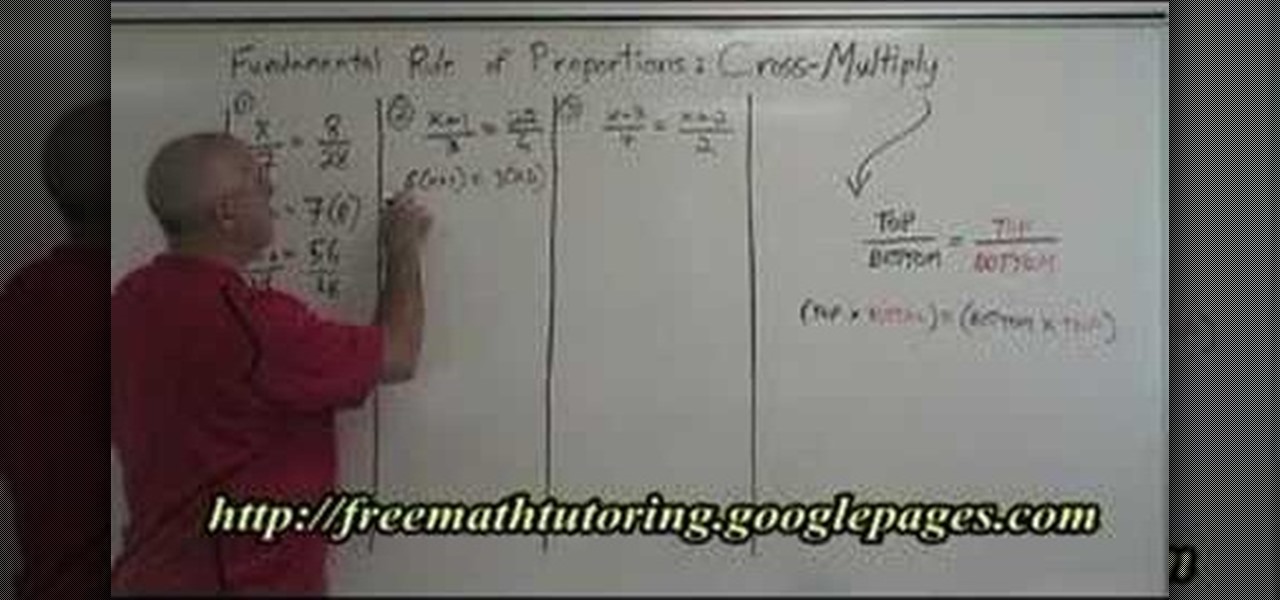
The author in this video explains the concept of fundamental rule of proportions. Fundamental rule of proportions means cross multiply. He explains that to arrive from an equation which has fractions into the one without equation multiply the top of left side with the bottom of right side and equal it with bottom of left side multiplied with top of the right side. In this way proportions can be cross multiplied to arrive at an algebraic expression. If you want to master the rule of proportion...

In a fraction where the bottom number, the denominator, is smaller than the top number, the numerator, it is called an improper fraction. Because it is improper, you'll want to fix it by turning it into a mixed number.

Ever wondered how stars stay a size two – besides starvation, personal trainers, and plastic surgery? Wonder no more. Check out this Howcast video tutorial on how to lose weight like a celebrity.

Achieve your goals by breaking them down into bite-sized pieces, and use digital shortcuts to track your steps towards success.

When it comes to female superheroes/supervillains, does it get any sexier than the classic Batwoman? Batman's archnemisis and equal in many ways, Batwoman is one chick whose looks really do kill. Of course, having advanced combat training doesn't hurt.

Want to mix and scratch like a professional DJ? To be a good DJ you need to understand the concepts of mixing tracks, adding cool effects, and of course you need a good sense of rhythm to line up the beats. This how to video explains how to use some of the features of the CDJ-400 mixer. Watch this DJ tutorial so you can learn a few of the features on the CDJ-400 mixer.

New to the Ubuntu Linux distribution and interested in setting up an address book for to keep track of your contacts? In this how-to, you'll learn how to make maximum use of the address book built into the Evolution email client. Take a look!

Learn how to mix a Pink Pillow alcoholic drink! Ingredients:

This audio softwarwe tutorial shows you how to work with Battery 3 insides of Cubase 4. Learn how to create a midi track in battery and use it in the Cubase 4 mixer.

In this software tutorial you will learn how to make a simple website using Photoshop. You may think it's too difficult to create your own site and that you need to use a template, but this tutorial will change all that! See how easy it is to design your own web page without a template right in Photoshop.

Watch this how to video as one of the BBQ Pit Boys show you how easy it is to barbecue chicken "low and slow", tender and juicy.

This is an instructional video on how to perform card shuffles that allow you to place particular cards at the top or bottom of the deck and how to keep them that way. False shuffles, such as the riffle shuffle and Hindu shuffle, are important for card magicians to create the illusion of shuffling cards, without losing track of a desired card or cards. Watch this video magic tutorial and learn how to do basic false and riffle shuffles for card tricks.

This is a short video tutorial of the method used for body condition scoring beef cattle. Learn how to evaluate the state of cows to keep track of the weight and health of cattle livestock.
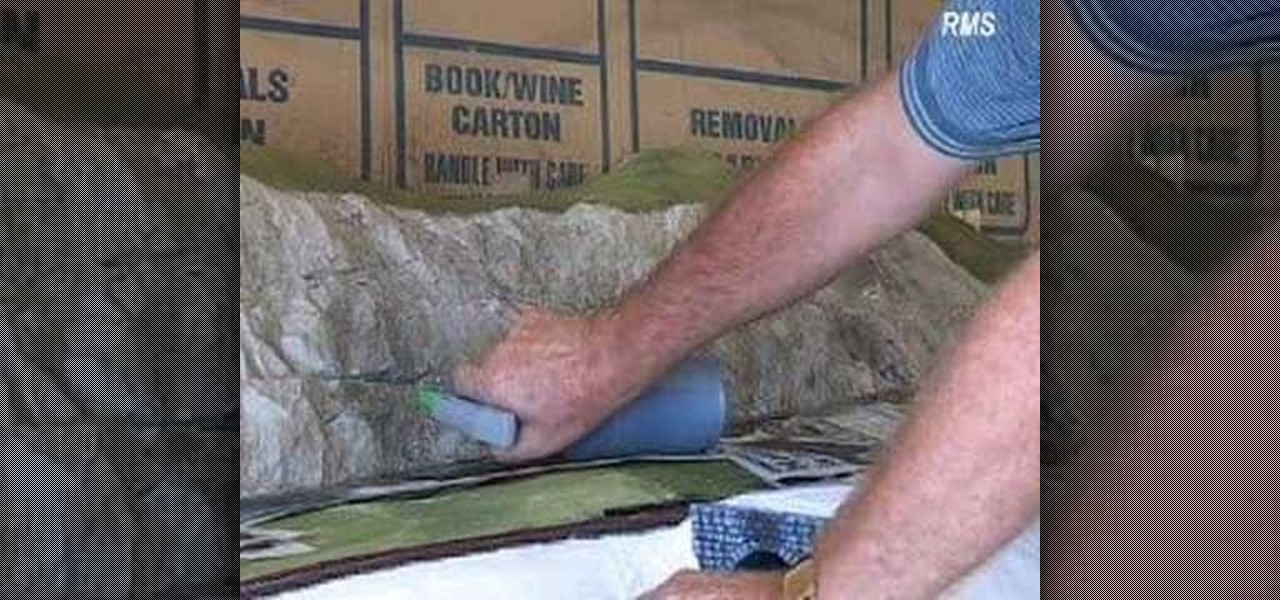
This video demonstrates how to spray paint realistic rock faces on hills and mountains using acrylic paint washes. The process is easy and enhances model train track backgrounds.

The Kentucky Department of Fish and Wildlife Resources does an early summer goose round-up. They capture and leg tag juvenile and adult geese in order to track their longevity and movements. Check out this how to video on goose tagging to learn how to do it yourself!

This video will go over running a radio through the MicroKorg's effects and initializing a track (hold shift then press 3, then press 3 again while 3 light is blinking). Go to oscillator 1 on edit select 1 and select audio (aud) with the first effects knob.

Here, Mark Rotblat of Tubemogul shows how simple and easy it is for you to e-mail your tracking reports to yourself and other people.